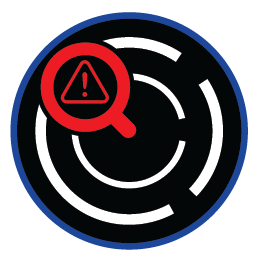
External Vulnerability Assessment
Unveiling and Prioritizing Your Organization's External Cyber Risk Landscape
ThreatNG employs a multifaceted approach to external vulnerability assessment, systematically uncovering, analyzing, and prioritizing cyber risks across your digital footprint. This comprehensive strategy is divided into four interconnected categories, ensuring no stone is left unturned in identifying potential threats and providing actionable intelligence for their mitigation. By integrating advanced data collection with sophisticated analytical frameworks, ThreatNG offers a truly holistic view of your external attack surface, allowing you to strengthen your defenses and make informed security decisions proactively.

Holistic External Vulnerability Assessment: From Discovery to Defense
ThreatNG's approach to external vulnerability assessment is a comprehensive, multi-layered strategy designed to provide unparalleled visibility and actionable intelligence. It systematically uncovers, analyzes, prioritizes, and continuously monitors your organization's external digital footprint to transform potential threats into manageable risks.
Core Vulnerability Intelligence & Contextualization
ThreatNG transforms raw vulnerability data into actionable insights. It integrates foundational technical details from the National Vulnerability Database (NVD), including severity and impact scores. This is enriched with probabilistic estimates of exploitation likelihood from EPSS and confirmation of active exploitation from Known Exploited Vulnerabilities (KEV). Finally, real-world context is provided through direct links to Proof-of-Concept (PoC) exploit code, allowing security teams to understand and reproduce attack methods for effective mitigation.


Digital Footprint Discovery & Analysis
Comprehensively identifying and examining all external digital assets associated with an organization, ThreatNG performs purely external unauthenticated discovery, requiring no connectors to uncover hidden assets and potential attack vectors. This process involves deep dives into domain intelligence, sensitive code exposure in public repositories, and mobile application discovery in marketplaces. Additionally, ThreatNG analyzes cloud and SaaS exposures, online sharing platforms, archived web pages, and the full technology stack to map the entire external digital presence and associated vulnerabilities.

Risk Assessment & Prioritization
ThreatNG translates discovered vulnerabilities and exposures into actionable intelligence for organizations. It performs various security ratings derived from collected intelligence, including Web Application Hijack Susceptibility and Data Leak Susceptibility. ThreatNG goes beyond merely identifying flaws; it understands their real-world exploitability, likelihood, and potential impact to create a nuanced, risk-driven prioritization framework. This framework is further enhanced by prioritized reporting and flexible policy management, helping organizations concentrate on the most critical risks and align with their unique risk tolerance.
Continuous Monitoring, Reporting & Collaboration
Ensuring ongoing vigilance and effective risk management, Continuous Monitoring, Reporting, & Collaboration by ThreatNG plays a vital role. The platform continuously monitors external attack surfaces, digital risks, and security ratings for all organizations. Comprehensive reporting offers executive, technical, and prioritized views, alongside specific reports like Ransomware Susceptibility and U.S. SEC Filings. An embedded knowledge base provides crucial risk levels, reasoning, recommendations, and reference links to guide informed decisions. Finally, collaboration features such as role-based access controls and dynamically generated Correlation Evidence Questionnaires foster efficient cross-functional cooperation.










